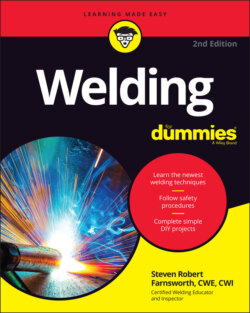Читать книгу Welding For Dummies - Steven Robert Farnsworth - Страница 41
Understanding the differences between steel and stainless steel
ОглавлениеStainless steel is different from regular steel because it contains 10 to 30 percent chromium. Chromium is added to the steel to create the resistance to corrosion that makes stainless steel so famous (and useful!). Stainless steel can contain a few other substances that make it perform at an even higher level; nickel is the most common.
Stainless steel today is classified into two general series:
The 200 to 300 series includes stainless steels made with chromium, nickel, and sometimes manganese. They’re more resistant to corrosion than the 400 series, and they generally have better qualities for welding.
The 400 series includes stainless steels that don’t contain nickel. They can’t be hardened as much as the 200 to 300 series.
Stainless steel’s most notable (and desirable) quality is its resistance to corrosion. The combination of steel and chromium creates an outer surface that’s terrific at resisting rust. Because of that quality alone, stainless steel is used in a huge variety of applications, from beer kegs to hypodermic needles to the St. Louis Gateway Arch.
